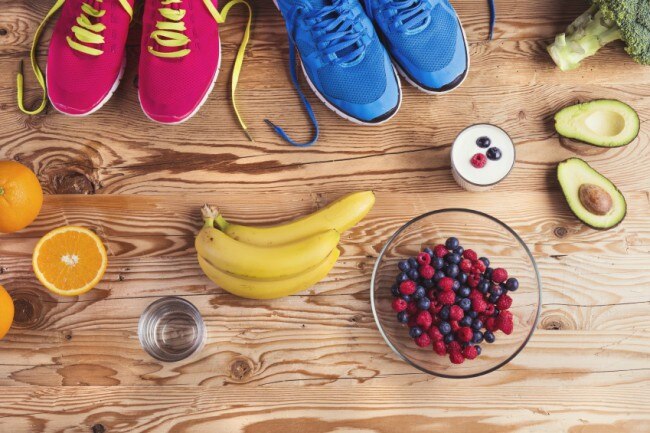Besides injury, the one thing every athlete desperately tries to avoid is a tummy ache. Unfortunately, if you do end up “distressed” during a race, Mommy won’t be able to make it all better. Exercise-induced stomach woes are some of the most uncomfortable, unrelenting and unattractive experiences you could possibly endure. All the more reason to take your sports nutrition to heart…er, your gut.
Training at lactate threshold, descending every mile on your tempo runs and hitting all the small goals up to race day won’t necessarily get you the win. Without proper nutrition and hydration, your big day could quickly unravel. Treat your stomach like a muscle (it’s made up of a lot of them, anyway) by training it to respond the way you need it to in those most crucial moments. With these tips, training your gut is really quite simple.

Start out easy
If you’re not used to consuming much more than water during your long workouts, starting new fuel on track day is probably not going to go well. Choose a lighter day, preferably a low-intensity session that won’t jostle your stomach. Got a 40-mile ride this weekend? That would be a good opportunity to introduce solid or semi-solid fuel.
Stick with simple carbs
So what kind of fuel is best? This largely depends on your flavor and texture preferences. But whether you choose a banana, a chocolate gel or a peanut butter energy bar, you should be noshing on quick-digesting carbohydrates. Fruit is always a healthy choice, but it’s not always portable. Plus, convenient fruits (I’m looking at you, bananas) can be too fibrous, resulting in an immediate trip to the bathroom. A simple-sugar-based fuel source, such as a packet of honey or GU, is usually well-tolerated by tummies. This may entail some trial and error, but it’s better to find your sweet spot sooner than later.
Control portions
Don’t get too comfortable, yet. Even though you’ve settled on your stomach-approved fuel source, there’s still some testing left to do. Those packets of GU may seem small in stature, but they’re big on performance. GU is designed to flow through your digestive system fast, so your muscles can use that energy to work. If your diet is pretty clear of sugary foods, though, an influx of glucose and fructose could cause gas, bloating or stomach cramps. It’s also important to note that many fuel formulas are infused with caffeine for an extra kick in the saddle. Be wary of this and set limits. One packet of GU (or just half if you’re a weeny like me) is sufficient for newbies.
Set an alarm
You can’t make up for lost time. Skimping on water the day before a race and then guzzling two bottles 30 minutes before the start is not an adequate hydration plan. Same goes for nutrition. Wait too long to eat, and you’ll end up running on fumes. The easiest way to ensure you’re properly fueled is by setting a time alert on your watch. Every 10 minutes, you should hear a beep that reminds you to take a sip of water or an electrolyte drink. After the fourth or fifth beep, think about refueling much-needed carbs.
Flush with water
To help ease the potential shock of sugar to your system, follow every bite, sip or chew with plain water. Your digestive tract will appreciate the little extra push to keep things moving. And your taste buds may thank you for clearing out any bitter leftovers on your palate. Besides, drinking water with your fuel will keep your throat wet and your muscles hydrated.
Jot it all down
The devil’s in the details, and taking notes will help you find him. A food journal is the best way to weed out the bad and determine what’s good. Get in the habit of toting your notes to every workout, so you don’t forget. Then write down brand names, flavors, the intensity of your workout, how much you drank and how you felt after consuming each different fuel source. It’s not just about your belly. Tune into your muscles, your heart rate and even your mouth. Did you feel lethargic or was your body refreshed? Did your heart rate spike after eating? Did your tongue feel tingly or dry? All of these nuances should be assessed and factored into your fueling plan.
With all that being said, there are a few specific things I avoid in all of my sports nutrition. You may not be as sensitive to some of these as I am, but I’ve included a list in case you’re interested.
Sensitive stomachs may want to avoid:
- Caffeine
- Artificial sweeteners
- Chicory root fiber (or fiber of any kind)
- Whey- or dairy-based products
- Foods with too many ingredients
What are your favorite training gels and snacks? Tell us in the comments below, share a pic on Instagram and use #RaiseHealth or tweet me directly @Lottsomiles.
